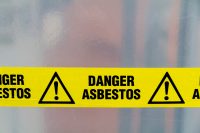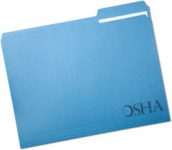Example Category with Description
Asbestos has been valued throughout much of human history for its versatility (it’s a fibrous mineral that you can spin into cloth!) and its unusual properties (it’s fireproof! And very strong!). It has been used in building materials and insulation, car parts, and clothing. Unfortunately, because asbestos dust can cause chronic lung disease and cancer, […]
An Illinois ambulance business has been cited by OSHA for failure to protect healthcare workers from exposure to bloodborne pathogens and other hazards while caring for patients. Why did an employer that should have known the rules flaunt them instead?
Although a new occupant in the White House will likely lead to changes at the Department of Labor, OSHA’s latest regulatory agenda suggests the safety agency is not in lame duck mode. Keep reading to find out what rulemakings are on the front burner and what it means for you.
“One year” is the operative time frame for managing universal wastes under the RCRA regulations at 40 CFR 273. All handlers of universal waste have one year to keep universal waste onsite. To prove that it meets this time limitation, the handler must be able to demonstrate the number of days the universal waste has […]
[Infographic] Guide to the New ANSI and EN388 Cut Levels by Joe Geng Did you hear? ISEA recently announced the arrival the new ANSI/ISEA 105-2016 Hand Protection Classification. Among the many other significant changes to the old cut testing standard, this exciting news means that, in order to increase the accuracy in test results among […]
Federally recognized Indian tribes with reservations may soon be able to apply to the EPA to run Clean Water Act (CWA) Section 303(d), the total maximum daily load (TMDL) program for U.S. waters located on those reservations.
A company in Waverly, Ohio, was recently fined over $56,000 for violations of the Occupational Safety and Health Administration’s (OSHA) lead standard concerning exposure monitoring and the use of personal protective equipment. Today we will review the permissible exposure limit (PEL) for lead, take a look at what happened in this particular case, and urge […]
Effective January 29, 2016, motor carriers, shippers, receivers, and transportation intermediaries are prohibited from coercing drivers to operate commercial motor vehicles (CMVs) in violation of several provisions of the Federal Motor Carrier Safety Regulations (FMCSRs); the commercial driver’s license (CDL) regulations, drug and alcohol testing rules; the Hazardous Materials Regulations (HMRs); and commercial regulations. Keep […]
Do states follow the federal requirements for the management of containers used to store or accumulate hazardous waste? Yes. Why? Because they have to. Do some states have container rules that are stricter than the federal rules? Yes. Why? Because they can. Under RCRA, a state’s hazardous waste provisions must be as strict as the […]
There may be a point at which a worker cannot do a job safely because of a disability. A worker with an intellectual disability will probably never be qualified to run heavy machinery. But how can you determine when a worker and a job combine to create a significant risk of substantial harm to the […]










